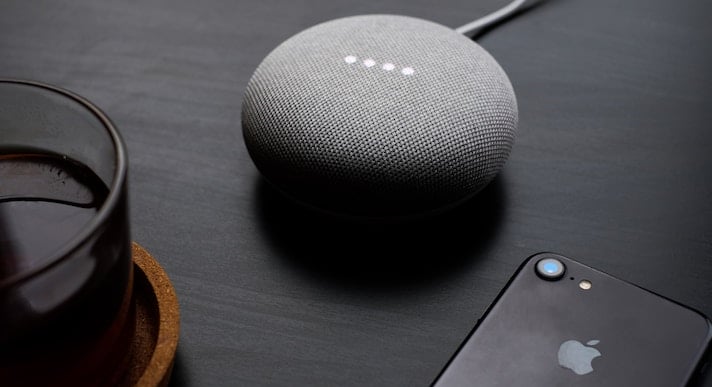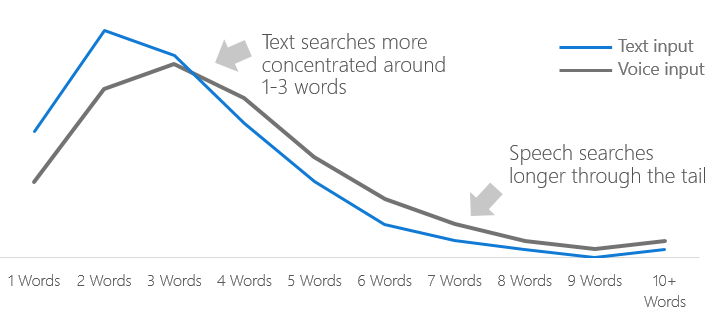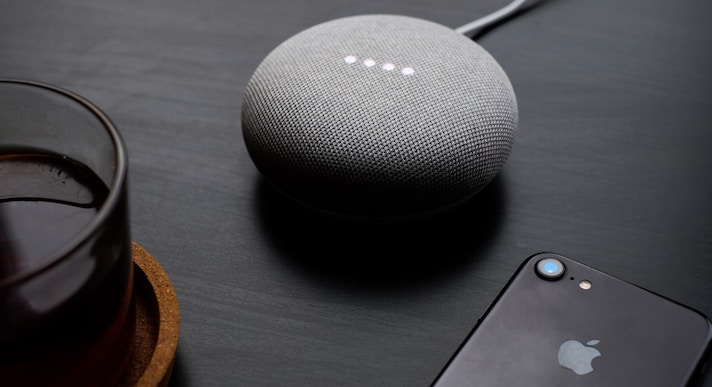
“Alexa, play my ‘concentration’ playlist", would be something that I might say to my Amazon Echo as I prepare myself to get stuck into some background reading, data finding and thought splurging activities, if I had an Amazon Echo that is. You see, I’m rather sceptical about this development and honestly, this technology. I’m sure it has its uses and benefits for a lot of people, but personally all I find myself doing is trying to make Siri say something funny. Usually it isn’t. When that fails I’ll research some of my favourite people, but how much more can I know about Ryan Gosling?
The question that I now have to consider is this: Do people use Voice Search better than I do?
We’ve all heard that Voice Search is ‘taking over’, or is the ‘death of SEO’. According to WordStream 50% of all searches will be voice searches by 2020. That’s only one year away.
That seems like quite a leap, however it’s worth noting that 72% of people who own a voice speaker use it on a daily basis, according to Google.
This starts to indicate that once people have a device, they use it regularly. The key question we need to consider is just how many people will start to purchase and use these devices?
I want to come back to that question shortly, firstly, lets start to think about what Voice Search actually means for SEO.
What techniques do we need to implement in order to successfully improve our SEO?
Well there’s a lot that you can do. I want us to focus some specifics though:
- Answer your customers questions with content
- Aim for Featured Snippets
- Have a Mobile Optimised Site
- Use the My Business listing on Google
Answer your customers' questions with content
You need to firstly understand your audience and what they are searching for. Use keyword research tools, learn what type of queries bring customers to your website. Write content which answers those questions or queries.
You could create a FAQ page, if you don’t already have one. You could also start to provide weekly or monthly blog posts which are focused on keywords relating to your customer searches.
Take very careful thought with the choice of keywords and know whether your content is primarily aimed at text or voice searches. The image below starts to present a pattern:

Aim for Featured Snippets
You should also be paying attention to featured snippets, this is an ever growing area in SEO and commonly referred to as ‘Position 0’ due to visually appearing higher up than the top ranked website on the SERPs. Your written content that answers specific questions will lead to successful placement of Position 0 content. Take this as an example:
I performed one of my regular searches (just kidding, we all know who Ryan is) via Voice Search and I was pleased with my results.

Have a Mobile Optimised Site
This is something that if you haven’t yet considered or actioned. You need to do so. Now. Today.
Voice search happens in most cases on mobile devices, so it should be a straightforward assumption that you need to have a mobile friendly website in order to satisfy your customers.
You can use Google’s Mobile-Friendly Test tool in order to understand this. Google will indicate what changes should be made, if any need to happen.
It’s also worth noting two other important areas:
- Page Load Speed
- HTTPS
Your page needs to load quickly, to feed our impatient minds and give us what we want and to give it us now!
If you’re in an e-commerce industry it is vital that you switch your HTTP to a HTTPS by purchasing an SSL certificate. This gives customer an added layer of security, it allows customers to know that who they are purchasing from is legitimate and that their details are safe.
Use the My Business listing on Google
Most voice searches tend to be completed about local elements such as ‘What is the best florist near me?’ If your business is listed, you’ve got a much better chance of appearing.
This information should also be on your website - think about where customers are used to seeing your location. A footer or a contact page are probably the first places people will look.
Just how many people will start to purchase and use these devices?
Back to our initial question, the forecast graphs for voice activated devices vary in all honesty. There’s two things to consider, one is that these types of predictions usually overestimate the importance or magnitude of a trend. I’m sure I once read that by 2018 90% of web traffic would be video only. We’re clearly not quite there.
So let’s consider that maybe Voice Search isn’t really taking over from SEO, and you’ve just spent six months preparing your site for the Voice Activated world. Have you wasted your time?
No. You’re not even close to wasting your time. The great thing about these four tips is that they each benefit your regular SEO just as much as your Voice SEO.
So go on, get stuck in, and do me a personal favour. Optimise your website with Ryan Gosling information. Me and Siri will be hooked for hours.
About Ascento
Ascento learning and development specialise in providing workforce development apprenticeship programmes to both apprenticeship levy paying employers and non levy employers. We work closely with employers to identify the key areas for development and design strategic solutions to tackle these with programmes that are tailored to each individual learner. With two schools of excellence focusing on Management and Digital Marketing we don’t deliver every qualification under the sun, but focus on what we know best and ensure that quality is at the heart of everything we do.








